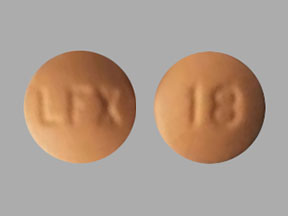Lofexidine Side Effects
Applies to lofexidine: oral tablet.
Serious side effects of Lofexidine
Along with its needed effects, lofexidine may cause some unwanted effects. Although not all of these side effects may occur, if they do occur they may need medical attention.
Check with your doctor immediately if any of the following side effects occur while taking lofexidine:
More common
- Chest pain or discomfort
- chills
- cold sweats
- confusion
- dizziness, faintness, or lightheadedness when getting up suddenly from a lying or sitting position
- slow or irregular heartbeat
- unusual tiredness
Other side effects of Lofexidine
Some side effects of lofexidine may occur that usually do not need medical attention. These side effects may go away during treatment as your body adjusts to the medicine. Also, your health care professional may be able to tell you about ways to prevent or reduce some of these side effects.
Check with your health care professional if any of the following side effects continue or are bothersome or if you have any questions about them:
More common
- Dizziness
- drowsiness
- dry mouth
- relaxed and calm feeling
- sleepiness
- trouble sleeping
- unusual drowsiness
Less common
- Continuing ringing or buzzing or other unexplained noise in the ears
- hearing loss
Incidence not known
For Healthcare Professionals
Applies to lofexidine: oral tablet.
General
The more commonly reported adverse effects have included orthostatic hypotension, bradycardia, hypotension, dizziness, somnolence, sedation, and dry mouth.[Ref]
Cardiovascular
Adverse reactions are reported at mean average daily doses up to 2.88 mg/day. With a mean dose of 2.16 mg/day, insomnia, orthostatic hypotension, bradycardia, and hypotension, were reported at 51%, 29%, 24%, and 30%, respectively. Syncope was reported in 0.9% of patients receiving 2.16 mg/day (1.4% for patients receiving 2.88 mg/day and 0% for placebo).
Blood pressure (BP) elevations of 140 mmHg (systolic) or higher, and above the subject's pretreatment BP, occurred in 39.7% (n= 23/58) of patients following discontinuation of a 5-day course of 2.88 mg/day. BP peaked on the second day after discontinuation.
Since market introduction (1992 in UK), there has been 1 case of QT prolongation, bradycardia, torsades de pointes, and cardiac arrest with successful resuscitation; there have been 3 reports of clinically significant QT prolongation in patients concomitantly receiving methadone.
Cardiac electrophysiology studies with single doses of 1.44 to 1.8 mg produced maximum mean change from baseline QTcF of 14.4 and 13.6 milliseconds, respectively in healthy normal volunteers. In a phase 3 study in opioid-dependent subjects, a maximal mean prolongation of the QTcF interval of 7.3 and 9.3 milliseconds occurred at doses of 2.16 and 2.88 mg/day respectively. In patients with renal or hepatic impairment, QT prolongation was reported; it was more pronounced in subjects with severe renal or hepatic impairment.
Very common (10% or more): Orthostatic hypotension (up to 42%); bradycardia (up to 32%); hypotension (30%), hypertension with abrupt discontinuation
Uncommon (0.1% to 1%): Syncope
Postmarketing reports: QT prolongation
Nervous system
Very common (10% or more): Dizziness (up to 23%), somnolence (up to 13%), sedation (up to 13%)
Gastrointestinal
Very common (10% or more): Dry mouth (up to 11%)
Other
Uncommon (0.1% to 1%): Tinnitus
Psychiatric
Insomnia was reported in 51% of patients receiving a mean average daily dose of 2.16 mg/day and 55% of those receiving 2.88 mg/day; however, it was also reported by 48% of those receiving placebo.
For patients stopping this drug, a higher incidence of diarrhea, insomnia, anxiety, chills, hyperhidrosis, and extremity pain occurred in drug-treated patients compared to those taking placebo.
Very common (10% or more): Insomnia (up to 55%)
Frequency not reported: Withdrawal symptoms
Frequently asked questions
- Is Lucemyra (lofexidine) a controlled drug?
- How long does it take to work?
- How do you get Lucemyra (lofexidine)?
More about lofexidine
- Check interactions
- Compare alternatives
- Reviews (44)
- Dosage information
- Patient tips
- During pregnancy
- Drug class: antiadrenergic agents, centrally acting
- Breastfeeding
- En español
Patient resources
Other brands
Professional resources
Other brands
Related treatment guides
References
1. Product Information. Lucemyra (lofexidine). US WorldMeds LLC. 2018.
Further information
Always consult your healthcare provider to ensure the information displayed on this page applies to your personal circumstances.
Some side effects may not be reported. You may report them to the FDA.

